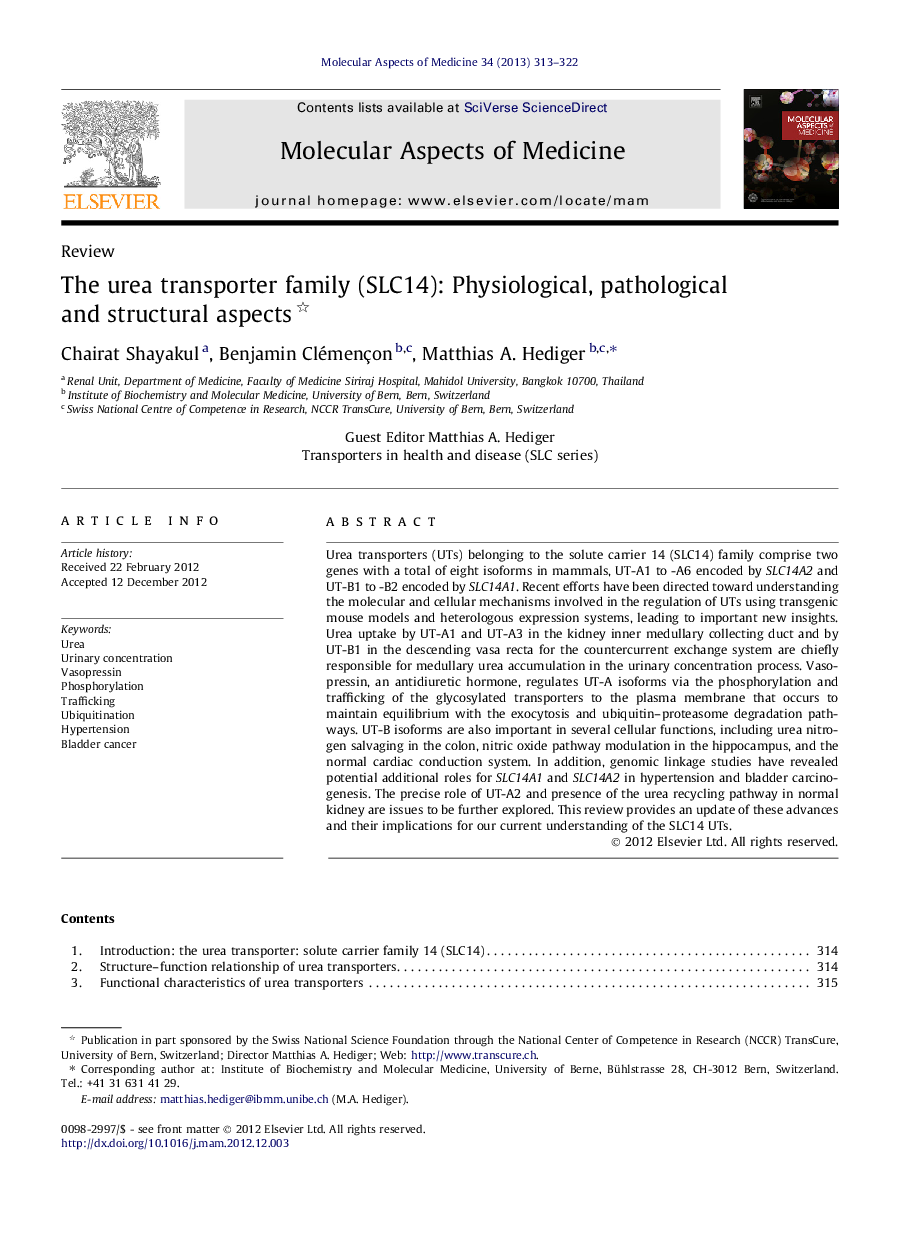| Article ID | Journal | Published Year | Pages | File Type |
|---|---|---|---|---|
| 8341530 | Molecular Aspects of Medicine | 2013 | 10 Pages |
Abstract
Urea transporters (UTs) belonging to the solute carrier 14 (SLC14) family comprise two genes with a total of eight isoforms in mammals, UT-A1 to -A6 encoded by SLC14A2 and UT-B1 to -B2 encoded by SLC14A1. Recent efforts have been directed toward understanding the molecular and cellular mechanisms involved in the regulation of UTs using transgenic mouse models and heterologous expression systems, leading to important new insights. Urea uptake by UT-A1 and UT-A3 in the kidney inner medullary collecting duct and by UT-B1 in the descending vasa recta for the countercurrent exchange system are chiefly responsible for medullary urea accumulation in the urinary concentration process. Vasopressin, an antidiuretic hormone, regulates UT-A isoforms via the phosphorylation and trafficking of the glycosylated transporters to the plasma membrane that occurs to maintain equilibrium with the exocytosis and ubiquitin-proteasome degradation pathways. UT-B isoforms are also important in several cellular functions, including urea nitrogen salvaging in the colon, nitric oxide pathway modulation in the hippocampus, and the normal cardiac conduction system. In addition, genomic linkage studies have revealed potential additional roles for SLC14A1 and SLC14A2 in hypertension and bladder carcinogenesis. The precise role of UT-A2 and presence of the urea recycling pathway in normal kidney are issues to be further explored. This review provides an update of these advances and their implications for our current understanding of the SLC14 UTs.
Keywords
Related Topics
Life Sciences
Biochemistry, Genetics and Molecular Biology
Biochemistry
Authors
Chairat Shayakul, Benjamin Clémençon, Matthias A. Hediger,
